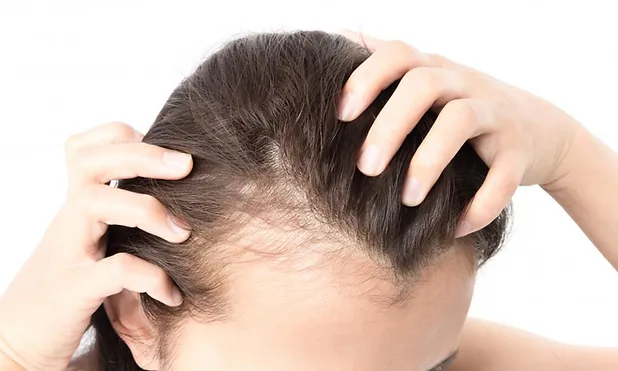Blogs

Hair Loss 101: What You Need to Know Before You Panic
Losing hair can be scary. Whether you’re finding extra strands in your brush, shedding in the shower, or noticing thinning around your part — it’s easy to feel overwhelmed. But before you panic, let’s break down the basics of hair loss, what’s normal, what’s not, and how to begin the journey toward restoration.
How Much Hair Loss Is Normal?
First, let’s clear up a common misconception: shedding is normal. On average, most people lose 50 to 100 hairs per day as part of the natural hair growth cycle. Hair grows, rests, falls out, and starts again. It’s only when that shedding becomes excessive — or when hair isn’t growing back — that we begin to see visible thinning.
The Three Phases of Hair Growth
To understand hair loss, you need to understand how hair grows. The hair cycle has three key stages:
1. Anagen (Growth Phase):
This is when hair is actively growing. It lasts 3 to 7 years.
2. Catagen (Transition Phase):
A short phase where growth slows and the follicle begins to shrink.
3. Telogen (Resting/Shedding Phase):
Old hairs fall out to make room for new growth. This lasts about 3 months.
Disruptions to this cycle — especially prolonged telogen or shortened anagen — can result in excessive hair loss.
Common Causes of Hair Loss
Hair loss doesn’t have a one-size-fits-all cause. Some of the most common include:
• Stress & Trauma:
Physical or emotional stress can shock the system and trigger temporary shedding (telogen effluvium).
• Nutritional Deficiencies:
Low iron, protein, vitamin D, zinc, or B vitamins can starve your follicles.
• Hormonal Imbalances:
Thyroid issues, PCOS, postpartum shifts, or menopause can all influence hair loss patterns.
• Genetics:
Hereditary hair loss (like androgenetic alopecia) affects both men and women.
• Medical Conditions & Medications:
Autoimmune disorders, certain prescriptions, and scalp infections can lead to thinning.
• Poor Gut Health & Digestion:
If your body isn’t absorbing nutrients properly, your hair may be the first to suffer.
Signs It’s Time to Take Action
If you’re noticing:
• More hair in your brush or drain
• Thinning at the crown or temples
• Bald patches or a widening part
• Hair growing in weaker, finer, or slower
…it’s time to investigate the root cause.
Where to Start
Hair loss is often a symptom, not the root issue. At Restore Hair Now, we take a whole-body approach — looking at your internal health, stress levels, lifestyle, and nutrition. From blood tests to scalp analysis, we create custom strategies that treat the cause, not just the symptoms.
The Bottom Line
Hair loss is common — but that doesn’t mean it’s hopeless. With the right information, support, and strategy, you can take back control of your hair health.
Ready to uncover what’s behind your shedding? Book a consultation today with Restore Hair Now, and let’s start your journey to restoration — from the inside out.